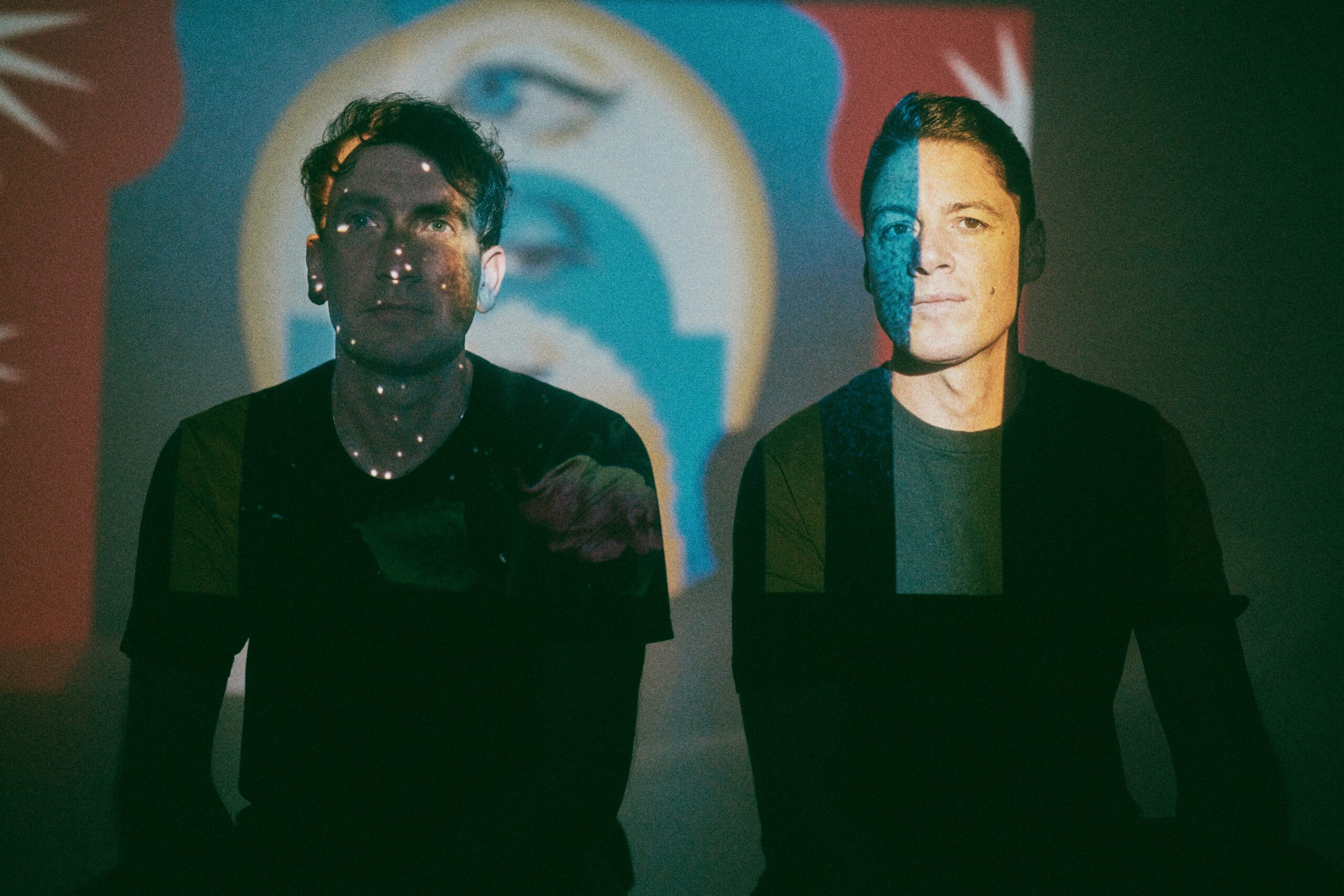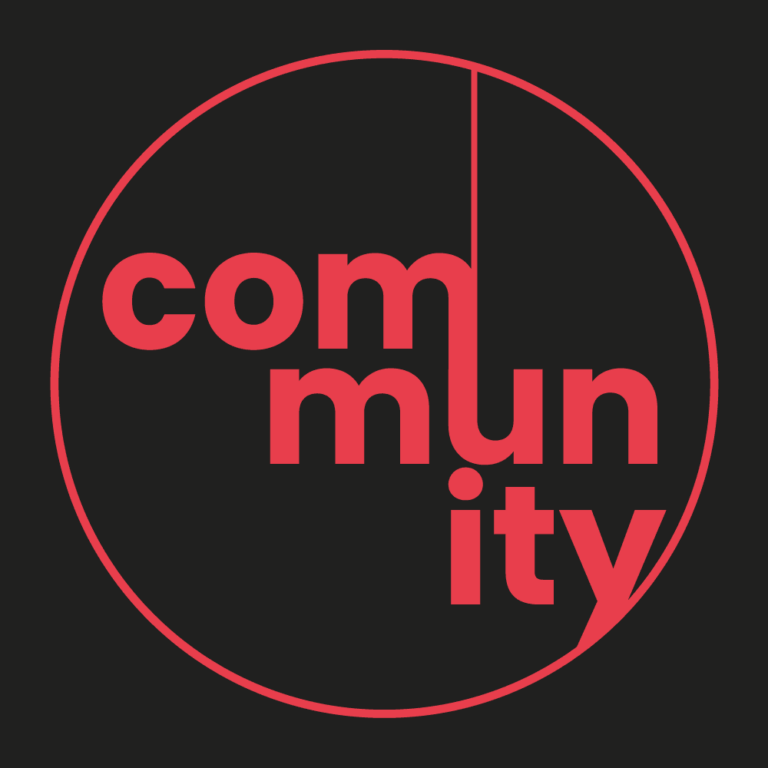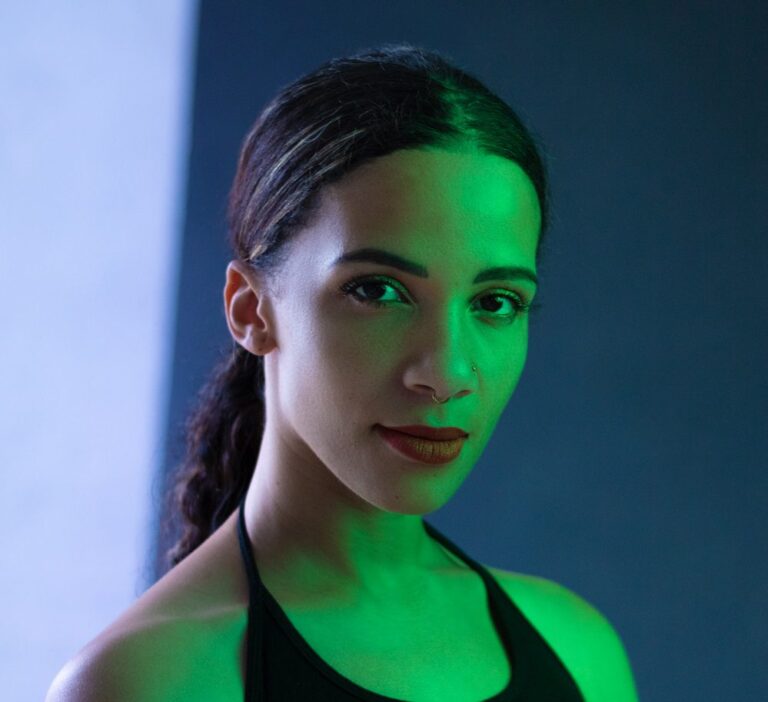Not Forever: an album title that imagines something fleeting, temporary, or subject to change. It only makes sense for this to be the title for The Upbeats’ sixth studio album, one that proves themselves as musicians that are constantly ready to revamp their sound and explore new sonic realms.
Within the first minute of the title track and album opener, you could be fooled into thinking you were listening to someone else entirely. Haunting vocals and shimmering pads introduce this new musically focused sound from the New Zealand-based duo, before we are re-introduced with drums that nod back to The Upbeats’ more recognisably drum and bass tunes.
The artistic development from Vision Recordings must be applauded as well. Upon its release in 2015, The Upbeats and Noisia’s iconic neuro slammer Dead Limit quickly become one of the most infamously teased intros in drum and bass since the likes of Konflict’s Messiah or Bad Company’s The Nine – it’s hard to imagine a modern drum and bass scene without it. This didn’t stop Vision trusting The Upbeats to spread their wings six years later, however, allowing them to explore their art in whole new ways previously unseen under the alias.
From the artwork to the collaborations with the likes of Sylvee, Jordan Dennis, and Fat Freddy’s Drop’s Joe Dukie, the album is a truly engulfing piece of art from start to finish.
Despite New Zealand’s lockdowns and the subsequently rescheduled album tour, the pair seem upbeat (sorry) as we chat about the process behind the album, their newfound creative direction, and their brand-new AV showcase. Read the full chat below:
Hey! How are things in New Zealand?
Jeremy: Well, we’re locked down currently which is fine because I’m pretty sure it will only be a temporary thing, but it’s unfortunate timing with the album having just come out. We had to reschedule the whole album tour, and I’d say it will realistically be a couple of months before we get back to doing shows again. We’ve had a lot of freedom before this however, so we’re not feeling as exhausted as we could.
Dylan: Yeah, it’s not too bad. It’s full lockdown in Auckland where Jeremy is, and the rest of the country has slightly fewer restrictions.
Things were open when you announced the album in April, right?
Jeremy: Yeah, totally. Things were open until about three weeks ago.
Dylan: It does come and go. As soon as there’s any sniff of a community case here, they lock everything down. It’s severe, but it works. I’ve been caught out a couple of times travelling to do work with Jeremy. I’ll spend a day in the studio and then that day they’ll announce a lockdown in Auckland and I’ll have to scramble to get out.
How does it feel releasing the album now in these circumstances?
Jeremy: To be honest, we’ve been trying to look on the positive side of things. This is potentially quite a good time to release it in the sense that people are looking for distractions and for things to get lost in. The response has been really positive.
Dylan: You usually get caught up in the album release whirlwind. You put up the music and then you’ve got the press, the shows, etc. and it can all feel like a bit of a blur. It’s nice to have the time to think purely about the record and how it’s being received.
The release is clearly not just club-focused, and it feels like so many new influences have crept into it. Could you explain some of these?
Jeremy: I almost feel like we’ve taken less directly from other music for this record than we have in the past. It was about changing our approach to writing music. This whole album started with us writing little melodic sketches and trying to capture a feeling without any drop, without any drums or bass. It was about trying to capture moments, letting them sit and figuring out which ones resonated with us after a month or two. Only then would we figure out which ones to develop and turn into the songs that are on there now.
Beams with Joe Dukie from Fat Freddy’s Drop is an impressive link up. How did that come about?
Dylan: He and the Fat Freddy’s guys are based in Wellington where I’m from and where Jeremy used to live. Everyone thinks that because New Zealand is so small, we all know each other, but we’ve never had any dealings with them before Jeremy chance encountered him.
Jeremy: Yeah, so I just happened to sit down next to him and his manager on a plane and we got talking. We got on really well and as an off-handed comment when we were leaving the plane, he was like ‘if you ever want to do something?’. I obviously did not hesitate to get his contact details, and within a couple of weeks, he’d agreed to sing on one of the demos! He’s amazing, and one of those voices we only ever dreamed of working with. It was an incredible opportunity.
Dylan: There was a bit of pressure on mixing that one…
It’s also one of the many tunes on the album that feels distanced from the drum and bass framework and leans more towards styles you’ve put out under your other aliases. Why was now the right time to incorporate this under The Upbeats?
Dylan: We have a couple of older tracks like Say Go with Mara TK, for example, that are a bit more musical in nature, and that just felt like a natural direction to be pushing in. We were a bit tentative about it; it’s quite a departure from writing Dead Limit style tunes to that. We love doing it though, so we made the decision at the beginning of the album process.
Jeremy: This record was also a bit more honest and self-indulgent. We’re not writing with a peak-time set moment in mind or to try connect with other DJs. We’re writing it because this is the music we want to hear.
The album is such a journey from start to finish which I really appreciate as a listener.
Dylan: The album journey thing is definitely important to us; we didn’t want it to be just a collection of singles.
Jeremy: We’ve always tried to do this with previous albums, but this one we nailed the best in terms of it being a full musical journey.
The artwork really helps with that! Tell me a bit more about it.
Jeremy: We found this artist called Dohee or @kimchisuperpower on Instagram who we’ve been following for a while. We really liked her style and some of the symbology stuff she did, and we wanted to have the single artworks all relate to the final cover. When we released the first singles, we were going to release them as standalones and not say there was an album coming. It wasn’t until the final artwork was released that it all came together and made sense. It was important to us that there was a theme that all linked in, and she absolutely smashed that.
It gives me art deco/old movie poster vibes which matches the music to a tee. Would you like to create a movie score one day?
Dylan: Yeah, we’d absolutely love to do that at some point. It’s just having the time and energy to go down that path.
Jeremy: Basically, any opportunity to put our skills into different formats is something that we’re interested in. We’re always looking to flex different muscles, different techniques.
Dylan: That’s the thing about drum and bass that’s exciting for us, having that new take. Most of this album is written around 170bpm, but in different variations. There’s a quarter time tune, a halftime tune, as well as your full-time drum and bass tunes. There’s only one tune that deviates from that tempo across the whole thing.
Jeremy: There’s not really anything on the album that is a classic paint by numbers Upbeats tune. I feel like we really pushed ourselves with each song for it to be an exploration into new territories, and this is one of the things I’m happiest about with the record.
Are there any other ways in which you feel writing this album has changed the way you approach production?
Dylan: Yeah, definitely. This is the first time that we’ve written basic little sketches to start things off. We were writing tons of little ideas of which we probably had about 40 or 50.
Jeremy: There was a little more freedom in our exploration and development of these ideas. We could explore various directions and we didn’t have those bones set in place from the start. We also wanted this album to focus a lot on vocals, so when we approached vocalists with the sketches, we wanted there to be a lot of space and give them freedom to be able to express themselves.
Dylan: We did also write a lot of music in classic Upbeats style but made the conscious decision to shelve them.
It must be tempting to still write them I imagine!
Jeremy: Oh definitely, we’ll still release that stuff.
Dylan: Exactly, it’s cool to have moments in time. The next release could be something completely different.
You mentioned online that the title track was written with you both on other sides of the globe. Have you been separate through most of the writing process?
Dylan: Yeah, so I was stuck over in London for most of last year and got back to New Zealand in December. We figured out a system to write regularly and communicate properly together despite Jeremy being in Auckland and me being in London. Being in the studio and being able to vibe off each other is such a massive part of writing tunes. If you can’t have that then it can take much longer to write music and you’re often second guessing yourself.
Jeremy: There’s been about 6 or 7 years in which we’ve been living on opposite sides of the world, where we’d start stuff separately and then finish it in the studio together. The online process wasn’t collaborative until this album though. We realised we wouldn’t be able to get in the studio together because of COVID, so we had to figure out how to properly work back and forth. That’s probably the most positive thing to come out of it, the whole system is so much better. We do real time sessions together where one person is controlling, and the other person can see the DAW and get high quality audio. The process was really collaborative.
Dylan: It’s a plugin called Listento from Audiomovers if anyone’s interested. It’s a god send!
Tell me about Horizon. I see you wrote this one with a new set intro in mind, right?
Jeremy: We’d been talking about this for a little while, having a track with a stupidly long build-up that resets the vibe after any DJ – it wouldn’t matter if you were playing after A.M.C or Skrillex. I started it in Istanbul airport on the way back to New Zealand after a summer tour. It was literally just an intro for about two years.
Dylan: Yeah, pretty much just a kick build-up. It was the danger tune that you’d play first. if you didn’t manage to mix out of it at the end, you’d be in trouble haha!
Jeremy: Yeah, it had been our intro for two years without a drop, so we had to include it on the album. There was a lot of pressure to make a drop that would deliver after that whole intro. We were happy with the end result though.
Have you managed to play many of these tunes out in their earlier forms?
Dylan: A few of them, but some of them haven’t really been road tested.
Jeremy: I’d say maybe about of half we’ve played regularly, and half not at all.
At least you’ve got the rescheduled album tour to look forward to then.
Jeremy: Totally. There are some songs on there like Beams with Joe Dukie and a couple of others which might not make sense in the club if you didn’t know them. Hopefully now though, people will have had time to get to know them and have some attachment to them.
Tell me about the Realms AV show you’re doing on the tour.
Dylan: There’s this ex-Wellingtonian guy that runs an AV company who is now based in LA. He’s been doing lights and visual components with people like Travis Scott, Janet Jackson and all sorts of crazy names, and we managed to get him and the team on board. With the strong theme and narrative that runs through the album, we thought it would be the perfect time to put something together that really brings it all together in a live setting.
Jeremy: Because the album is a little bit different, we wanted the way we performed it to be different and give more time for the music to tell a story. Having that visual component is very important in making it all a bit more immersive, and more like storytelling rather than being purely 16 bar bangers.
Is it still a DJ set or a live set up?
Jeremy: It will be a DJ set, but it’s going to be different to how we would normally do it.
Dylan: It’s a continuation if you’ve listened to the album or seen the artwork. The idea is to expand on that.
Jeremy: We had this whole sketch book of words that we kept on referring back to and there was one word that summed up what we were trying to do. The word is phenomenology, and it represents this shared feeling. With all this music, we were trying to create something that shared the feeling or emotions we had, and in turn relay that to the listener. With the AV component, we’re trying to create a feeling beyond just ‘oiii!’.
Share the feels, The Upbeats – Not Forever is out now on Vision Recordings
Follow The Upbeats: Facebook / Soundcloud / Instagram


